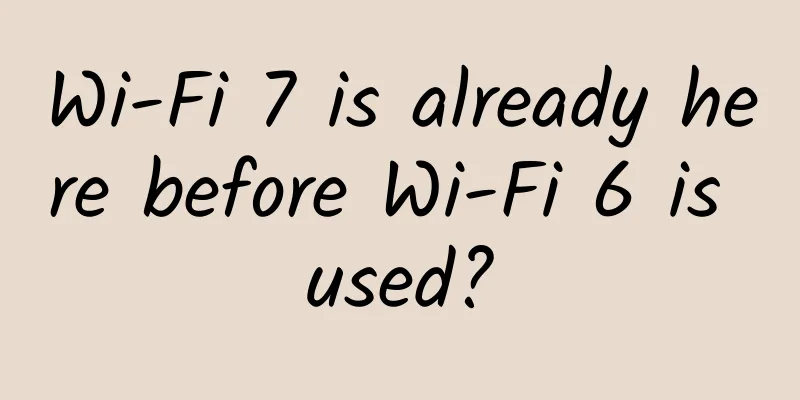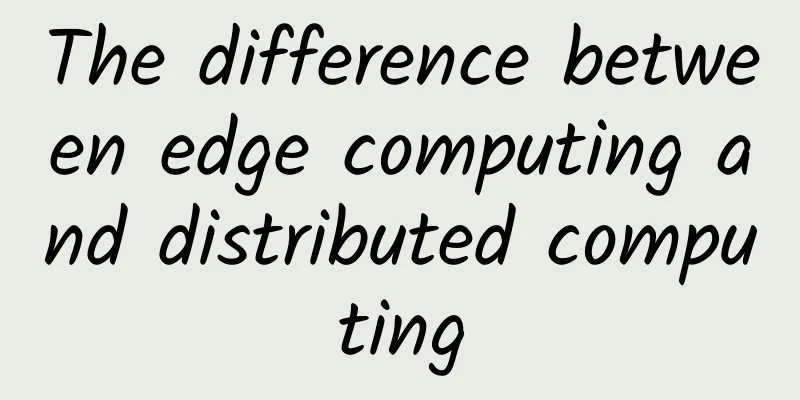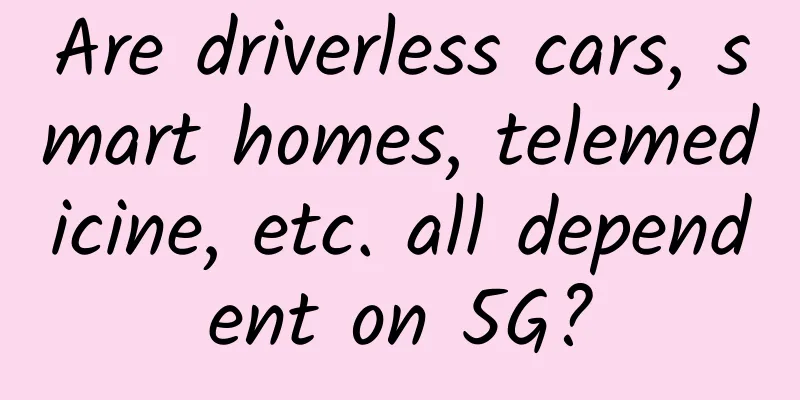Wi-Fi 7 is already here before Wi-Fi 6 is used?

|
On April 19, although Wi-Fi 6 is being widely popularized and it has become a consensus that many new 5G products support the Wi-Fi 6 protocol, there is still a long way to go before Wi-Fi 6 can be actually popularized. Recently, some media reported that the seventh-generation Wi-Fi 7 technology has been arranged, and it is said that the maximum speed of Wi-Fi 7 can reach 30Gbps. Users who are familiar with Wi-Fi 6 may know that its main improvement is that its QAM modulation accuracy is doubled, making the network speed of a single device faster, and the introduction of OFDMA technology can accommodate more device connections; in addition, Wi-Fi 6 also introduces BSS coloring technology, which can reduce signal interference between routers. At the same time, since the protocol introduces a target wake-up time design, Wi-Fi power consumption can be reduced. Compared with the Wi-Fi 5 routers currently used by most households, the maximum potential speed of Wi-Fi 6 will be 40% higher than the former, greatly improving the data transmission speed. The most likely protocol to become Wi-Fi 7 is the IEEE 802.11be standard that is currently under development. Compared to Wi-Fi 6 (802.11ax), Wi-Fi 7 is expected to have the following improvements: 1. Wi-Fi 7 will support 16 data streams. Supporting more data streams will also bring more powerful features such as CMU-MIMO. 2. Wi-Fi 7 also introduces a new 6GHz band, and three bands work simultaneously. In addition to the 2.4GHz and 5GHz bands, a new 6GHz band will also be introduced. 3. Wi-Fi 7 upgrades the signal modulation method to 4096QAM to have a larger data capacity. Wireless technology will of course involve the modulation method of the signal. In 802.11ax, the standard uses 1024-QAM modulation, and Wi-Fi 7 is expected to continue to upgrade the modulation method and directly use 4096-QAM to further expand the transmission data capacity and lay a solid foundation for the highest 30Gbps. With the arrival of Wi-Fi 7, the transmission speed can reach 30Gbps, which will bring users a smoother and faster transmission experience. Because it has a larger coverage area and effectively reduces transmission congestion, it will more effectively promote the popularization of 8K products. In other words, 8K video playback will no longer be a fantasy. |
<<: How to unleash greater potential of new infrastructure
>>: HTTP interview, 99% of interviewers like to ask these questions
Recommend
What is in the Http Header?
The author has developed a simple, stable, and sc...
Misunderstood 5G antennas disguised in layers - I feel bitter but cannot express it
What do you think of when you mention 5G antennas...
One year after official commercial use! Some people are standing outside the door and watching, but are "influenced by 5G"
[[350111]] Since the issuance of 5G licenses last...
With the rise of new infrastructure and other demands, the upgrade of the next generation domain name system is imminent
When it comes to the Internet domain name service...
When the Internet of Things collides with 5G: What are the biggest conflicts?
Many companies are already using IoT data to hand...
ABI Research: 5G slicing will generate $20 billion in revenue
5G slicing is a key enabler of new business model...
RackNerd New Year promotion starts at $10.99/year, 8 data centers available in San Jose, Los Angeles, etc.
RackNerd launched several special packages during...
Three ways to send large amounts of data over HTTP
In the early days of the web, people sent files t...
The Data Security Law has been officially announced! How to manage risks and protect sensitive corporate data?
On June 10, 2021, the "Data Security Law of ...
[11.11] LOCVPS: 30% off on all VPSs/50% off on some VPSs, 50 yuan bonus for 300 yuan top-up, KVM/XEN multiple computer rooms available
LOCVPS (Global Cloud) officially launched the Dou...
CUBECLOUD Christmas 12% off, Hong Kong/Los Angeles CN2 GIA line VPS monthly payment starts from 60 yuan
I received a Christmas and New Year promotion fro...
Connecting new momentum, intelligent manufacturing wins the future: Huawei Intelligent Manufacturing Network Innovation Digital Summit 2022 was successfully held
On October 28, Huawei Intelligent Manufacturing N...
Patent empirical analysis of opportunities and challenges in China's development of 6G communications
Compared with 2G communication network, 3G realiz...
Why is WiFi on buses not as popular as on subways?
Public transport Wi-Fi operator 16Wi-Fi recently ...
Why does the TCP protocol have a sticky packet problem?
The TCP/IP protocol suite establishes a conceptua...









